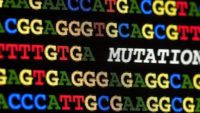Neo-Darwinian evolution, the popular version of evolution today, asserts that mutations provide the mechanism for the change required to evolve a single-celled organism into a human over time. Upon examination of the evidence, however, it is clear that mutations cannot provide the genetic information required for such change.1 If mutations cannot provide the mechanism for the change required by neo-Darwinian evolution, what can? A recent area of study that some evolutionists are hopeful will provide an answer to that question is epigenetics.2 Epigenetics is the term used to describe the mechanism whereby genetic traits are inherited—passed on to offspring—not from [More]
Apologetics Press has written extensively through the years about the unsubstantiated claims scientists frequently make about dinosaurs and their alleged testimony for the General Theory of Evolution (see Lyons and Butt, 2008). Evolutionary scientists, eager to introduce the world to the latest alleged multi-million-year-old dinosaur, frequently make assertions without adequate evidence. Nevertheless, month after month, year after year, the claims are made: “this dinosaur evolved 200 million years ago,” “that dinosaur evolved into a bird,” “no large mammals lived during the time of the dinosaurs,” etc. Although many evolutionists find it difficult to see why creationists so often are skeptical [More]
The notion that petrification processes take thousands of years blown out of the water in a matter of weeks. …read more Read more here: creation.com
THE HEAVENS DECLARE: Additional proof of creation: MetamorphosisExclusive: David Rives notes complex process could not have ‘happened’ through trial and error Watch: Additional proof of creation: Metamorphosis
THE HEAVENS DECLARE: The 1 definition that defies evolutionExclusive: David Rives illustrates blood-clotting ‘cascade’ as evidence for the Creator’s hand Watch: The 1 definition that defies evolution
The long and tortuous uniformitarian history for these caves is riddled with difficulties. …read more Read more here: creation.com
How do evolutionists construct their scientific case for evolution? How can the creationist respond in scientific terms? …read more Read more here: creation.com
How did they drain off the continents? …read more Read more here: creation.com
By Melinda Christian Emperor penguins are among the world’s most recognizable and well-loved birds. …read more Read more here: AIG Daily
How did the universe begin? Some people say that it came into existence billions of years ago in a massive explosion. But this Big Bang has some big problems. More… …read more Read more here: icr.org
“Evolutionists like to tell us that such complex systems like this came about by random chance, yeah right.” Admin By Heather Callaghan By Brianna Acuesta Trees protect each other, sometimes even more than humans do. Longtime forest ranger in Germany, Peter Wohlleben, has been studying the forest since he first decided to become a… …read more Read more here: Natural Blaze
What does the recently unveiled Amazon Go store have to do with several new studies detailing how flies find water or how tiny roundworms can “taste light?” The “world’s most advanced shopping technology” that links the cutting-edge Amazon Go store to its customers depends on the same vital element linking roundworms and spiders to their environments: a sensor. More… …read more Read more here: icr.org
Some evolutionists insist they observe evolution happening all around us while others say it happens too slowly to be able to observe. How can it be both? …read more Read more here: creation.com
By Devon Spencer, DVM In the Dog Spies blog, Scientific American highlighted a recent study that starts to answer some questions about a new scent assessment for dogs. …read more Read more here: AIG Daily
Despite evidence to the contrary, evolutionists continue to offer up random mutations as an explanation of how life developed. …read more Read more here: creation.com
By Dr. Elizabeth Mitchell If we share a common ancestor with a chimpanzee, as evolutionists confidently maintain, then how did our brains leap so far ahead in size and capability? …read more Read more here: AIG Daily
By Dr. Andrew A. Snelling When geologists assume the earth changes slowly, they overlook astonishing evidence of Noah’s global Flood. …read more Read more here: AIG Daily
By Dr. Don DeYoung One-third of the world’s sugar comes from the lowly sugar beet. But God stored other treasures in this tuber, which we’re just beginning to exploit. …read more Read more here: AIG Daily
A new bioengineered medical device was designed to treat people with a severe loss of neurologic muscle control. It affords a rare opportunity to clearly see some of the hidden relationships between mind, body, and designed interfaces. A unique case study indicates that the brain actually responds to the mind as a separate entity. More… …read more Read more here: icr.org
Did the human brain evolve from an ape-like brain? Two new reports describe four human genes named SRGAP2A, SRGAP2B, SRGAP2C, and SRGAP2D, which are located in three completely separate regions on chromosome number 1.1 They appear to play an important role in brain development.2 Perhaps the most striking discovery is that three of the four genes (SRGAP2B, SRGAP2C, and SRGAP2D) are completely unique to humans and found in no other mammal species, not even apes. While each of the genes share some regions of similarity, they are all clearly unique in their overall structure and function when compared to [More]
Researchers discovered eight well-manufactured throwing spears in an Ice Age coal deposit near Schöningen, Germany. They are calling these the oldest human tools. What can forensic science reveal about the people who made them? Portions of the Schöningen open pit coal mine were set aside for archaeological work decades ago. In 1997, Hartmut Thieme of the Lower Saxony State Office for Heritage described three spears that he found in the Helmstedt lignite coal mine.1 They were constructed to such exacting specifications that replicas of them performed as well as modern javelins in throwing tests. The site also contained [More]
By Michael Belknap According to a report recently published in The Washington Post, researchers have uncovered the cranial remains of an enigmatic mammoth. …read more Read more here: AIG Daily
Cockroaches are thought to be disgusting pests, but they play an important role in degrading waste in nature. …read more Read more here: creation.com
Just when we thought we knew all the basics about the human body, anatomists made three surprising discoveries in 2016. The newfound human body complexity borders on science fiction. More… …read more Read more here: icr.org
Evolution would require new genetic information, but only loss of genetic information is observed …read more Read more here: creation.com
This month, Science and Nature commemorated the anniversary of an important paper that was published in Science forty years ago, titled “Variations in the Earth’s Orbit: Pacemaker of the Ice Ages.” This paper convinced many secular scientists of the validity of the astronomical, or Milankovitch, ice age theory. But it appears that celebrated paper has been invalid for a quarter century. More… …read more Read more here: icr.org
By Simon Turpin Recently, in Foundation: An International Journal of Evangelical Theology, Pastor John James took exception to AiG’s approach toward Genesis 1. …read more Read more here: AIG Daily




































